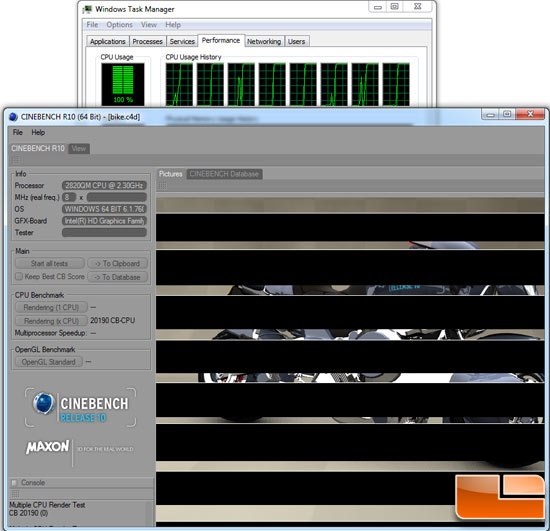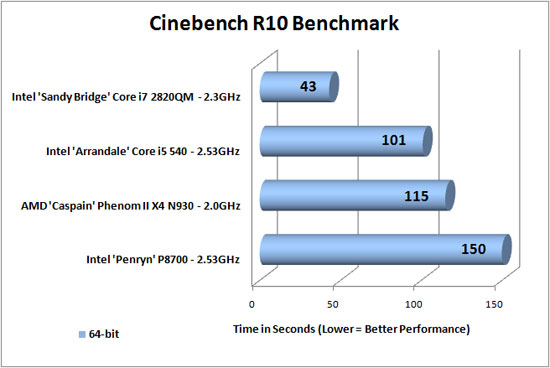Intel Core i7-2820QM – Sandy Bridge For Notebook PCs
Cinebench R10
MAXON; CINEBENCH R10:
CINEBENCH is the free benchmarking tool for Windows and Mac OS based
on the powerful 3D software CINEMA 4D. Consequently, the results of
tests conducted using CINEBENCH 10 carry significant weight when
analyzing a computer’s performance in everyday use. Especially a
system’s CPU and the OpenGL capabilities of its graphics card are put
through their paces (even multiprocessor systems with up to 16
dedicated CPUs or processor cores). The test procedure consists of two
main components: the first test sequence is dedicated to the computer’s
main processor. A 3D scene file is used to render a photo realistic
image. The scene makes use of various CPU-intensive features such as
reflection, ambient occlusion, area lights and procedural shaders. In
the first run, the benchmark only uses one CPU (or CPU core) to
ascertain a reference value. On machines that have multiple CPUs or CPU
cores, and also on those who simulate multiple CPUs (via HyperThreading
or similar technologies), MAXON CINEBENCH will run a second test using
all available CPU power. Again, higher Frames/Second and lower
rendering time in seconds equal better performance.

Cinebench R10 was able to put a 100% load across all the cores on
all of the processor cores/threads, which makes this a great benchmark to look at
multi-core platforms.

Benchmark Results: Running Cinebench R10 in 64-bit mode showed that the Intel Core i7-2820QM processor was 57% faster than the Intel Core i5 540 processor. This makes sense due to the fact that ‘Sandy Bridge’ processor has 8 threads versus the 4 available on ‘Arrandale” processors.

Comments are closed.